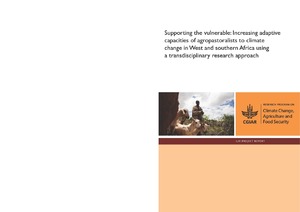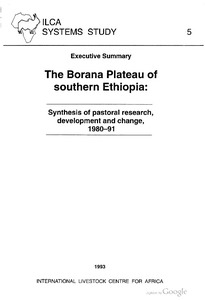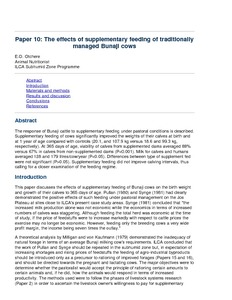Supporting the vulnerable: Increasing adaptive capacities of agropastoralists to climate change in West and southern Africa using a transdisciplinary research approach
The world’s climate is changing rapidly and Africa will be severely affected by this, not only because of the effects on ecosystems but also because of the low adaptive capacity of communities due to poverty and lack of infrastructure, services, and appropriate policies to support adaptation strategies. A large share of Africa’s poor are dependent on livestock for some part of their livelihoods, most of these living in smallholder, rainfed mixed systems and pastoral systems, where livestock play a key role as assets providing multiple economic, social, and risk management functions.
Tanzania Summary of Baseline Studies: Country Report for the GFCS Adaptation Program in Africa
This report reflects upon the consolidated findings from the baseline and scoping studies conducted under the auspices of Global Framework for Climate Services (GFCS) Adaptation Programme in Africa. It identifies gaps in climate information access and use at the local level, type of climate services farmers and pastoralists need in Tanzania, relevant channels to reach farmers with requested services, lead-time and gender specific requirements.
The Borana plateau of southern Ethiopia: Synthesis of pastoral research, development and change, 1980-91
This document is divided in eight chapters. The first chapter reviews rangelands and rangeland development in Ethiopia. The second chapter is an introduction to the Borana Plateau with ref. to natural resources and pastoral society. It reviews secondary information on geology and sociology, as well as original information on climate, soils, wildlife, plant ecology and water resources for the central Borana Plateau. Chapter three deals with vegetation dynamics and resource use.
The Borana plateau of southern Ethiopia: synthesis of pastoral research, development and change, 1980-91. Executive summary
The Borana plateau of southern Ethiopia: synthesis of pastoral research, development and change, 1980-91 summarises results from work conducted by 40 people in the southern Ethiopian rangelands between 1980 and 1991. The first chapter reviews rangelands and rangeland development in Ethiopia. The second chapter is an introduction to the Borana plateau: natural resources and pastoral society. The next three chapters deals with vegetation dynamics and resoruce use, Borana household economy, and livestock husbandry and production.
The changing face of pastoral systems in grass dominated ecosystems of Eastern Africa
All eastern Africa is in the tropics, but its grasslands cover a very wide range of altitudes. Extensive grasslands are mostly in arid and semi -arid zones. The area is subject to droughts and a high degree of pastoral risk. Potential vegetation is largely desert and semi-desert, bush and woodland, with only a small area of pure grassland, but the grass -dominated herbaceous layer of the other formations is very important for wildlife and livestock; 75 percent of eastern Africa is dominated by grasslands, often with a varying amount of woody vegetation.
The development experience
Discusses pastoral systems research (PSR) within the framework of the experience of livestock and pastoral development in Africa during the last 50 years, analyzing data on livestock population & productivity in relation to the welfare of pastoralists; and examines previous efforts in pastoral development relevant to PSR approach.
The economics of optimal health and productivity in smallholder livestock systems in developing countries
Livestock kept or produced in smallholder farming systems are an important component of the agricultural economy in the developing world. The role of livestock on smallholder farms varies widely, providing draught power for crop production or as a production activity for subsistence needs or market sale under systems ranging from extensive pastoralist to intensive, peri-urban feeder and dairy systems.
The effects of supplementary feeding of traditionally managed Bunaji cows
Describes effects of feeding Bunaji cows supplements of cottonseed cake, molasses-urea or fodder bank on birth & 1-year weight of calves and their viability to 1-year, and milk yield, for both calves & humans, of cows under an agropastoral management system.










